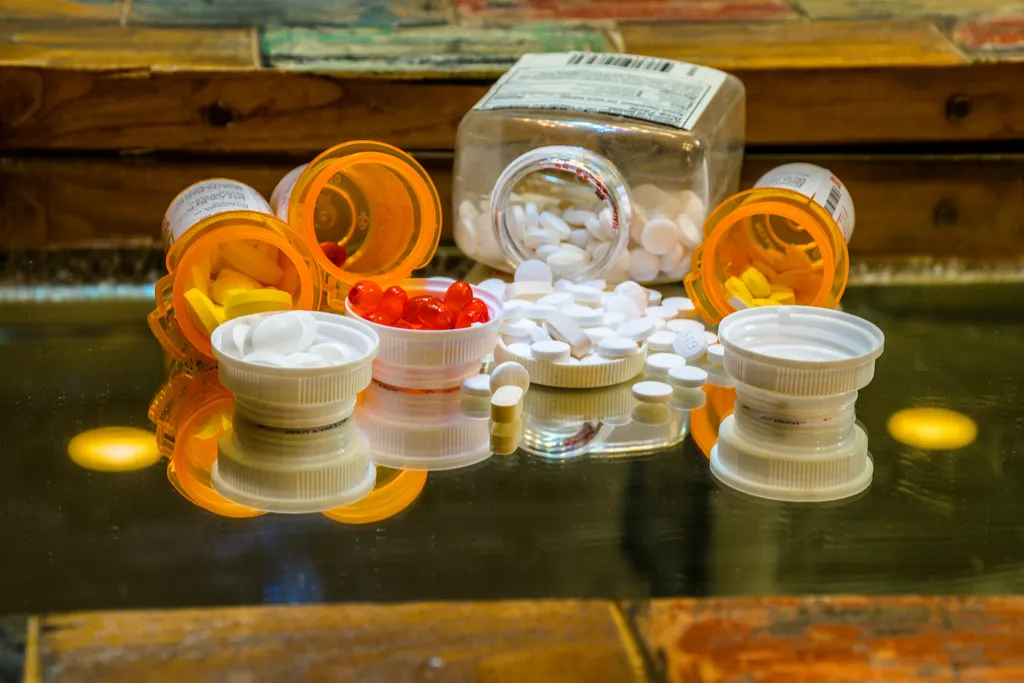17 Biggest Health Hazards Your Kids Face Today

Not everything that poses a risk to kids today comes with an obvious “warning” label. On the contrary, some of the biggest health hazards for children these days involve products that are specifically designed for them—things like candy, video games, and paintball guns. And some of these health risks are lurking in less obvious places, like on the fridge or at their birthday parties. Yes, it can feel like there’s danger around every corner. To know what to watch out for specifically, we’ve rounded up some of the biggest threats to children’s health today, both mentally and physically.
1
Cell Phones

One of the biggest health hazards kids today face is their cell phones. And yes, we’re talking about their physical health: In a 2014 study published in the Journal of Microscopy and Ultrastructure, researchers found that “children absorb more microwave radiation (MWR) than adults because their brain tissues are more absorbent, their skulls are thinner, and their relative size is smaller.”
Seeing as MWR can potentially cause cancer and other health issues, it’s best to limit your child’s phone time and make sure that, when they are using their smartphones, they’re keeping them at a safe distance.
2
Social Media

It’s not just the phone itself that is a health hazard to kids today. If your child’s activity of choice is scrolling through Instagram and Twitter, then they could be putting their mental health at risk, too.
In a 2019 study of more than 12,800 13- to 16-year-old girls published in The Lancet Child & Adolescent Health, researchers found that increased social media usage was associated with a decrease in sleep and exercise and an increase in exposure to cyberbullying, all of which contribute to poor mental health.
3
Batteries

If you have young kids, the batteries that you keep around the house could result in a trip to the hospital. According to a 2012 report from the Centers For Disease Control and Prevention (CDC), there were around 4,800 battery-related emergency room visits for children were reported in 2010, up from 1,900 in 1998. What’s more, while only one battery-related death occurred from 1995 to 1998, there were 13 reported from 2002 to 2010.
4
Magnets

Kids swallowing magnets? That sounds like something that would’ve happened before little ones were entertained 24/7 by streaming services and smartphone screens. And yet, data shows that magnet-related injuries have only gotten worse in the age of the internet.
One 2014 report published in The Journal of Pediatrics found that, thanks to the introduction of small, spherical magnets in 2009, the number of injuries involving multiple magnets—specifically, swallowing them and having them wreak havoc on the body—was more than eight times greater from 2010 to 2012 than it was from 2002 to 2009.
5
Playgrounds

Even though children aren’t playing outside at the park as much anymore, playground equipment is somehow an even bigger health hazard than it was before. A report from the CDC shows that emergency rooms nationwide saw more than 29,500 concussions and other playground-related brain injuries in 2013. Comparatively, just over 18,600 children visited the ER in 2001 for the same types of injuries.
6
Prescription Drugs

Prescription drug abuse has only become more of a problem in the adolescent population over the years. One article published in the May 2007 edition of the journal Pain Physician notes that there were nearly 333,000 emergency department visits related to narcotic pain relievers and benzodiazepines in 2005, compared to just about 114,500 in 1995. The article also notes that from 1992 to 2003, there was a 212 percent increase in the number of 12- to 17-year-olds abusing controlled substances.
7
Computers

Laptops and home computers are both a blessing and a curse. On the one hand, having 24/7 access to the internet has made it possible for kids to do their homework online and chat with friends at the click of a button. But on the other, studies have shown that too much computer usage can lead to impaired vision, obesity, and other health issues. In small doses, computers are a great asset—but when your child sits in front of their screen for hours at a time, that’s when it becomes a serious health hazard.
8
Toys

Sure, most toy manufacturers know better nowadays than to put large amounts of lead in their products. However, that isn’t to say that today’s toys are safer than they were some 20 years ago. On the contrary, a 2014 report published in the journal Clinical Pediatrics found that from 1990 to 2011, the annual toy-related injury rate per 10,000 children rose 40 percent. The study authors explained to CNN that these rising injury rates can be attributed to toys with small parts that are choking hazards, recalled toys, and wheeled toys like skateboards and scooters. But there’s one toy in particular that’s causing problems…
9
Hoverboards

Whoever invented hoverboards and decided to market them to children clearly wasn’t thinking about the potential health risks. According to one study published in the April 2018 edition of the journal Pediatrics, U.S. emergency rooms treated approximately 26,854 hoverboard-related injuries from 2015 to 2016, with the median age of patients being just 11 years old.
10
Televisions

Of course, numerous studies have shown that excessive TV time can increase a child’s risk of everything from obesity to high blood pressure. However, you should also be worried about injuries when it comes to televisions. One 2013 study published in Pediatrics determined that, for children under 18 years old, the rate of injuries due to falling TVs increased by more than 95 percent from 1990 to 2011.
11
Video Games

The last thing you want is for your child to be constantly cooped up in their room playing Fortnite. Not only is this bad for their mental health, but 2016 research published in the journal PLoS One also found that video game addiction can impact sleep duration, weight, and cardio-metabolic health.
“It is urgent to target early lifestyle behaviors, such as video game addictive tendencies, that could lead to major future health consequences,” Dr. Katherine Morrison, co-author of the study and associate professor of pediatrics for McMaster University’s Michael G. DeGroote School of Medicine, said in a press release. “It affects a vulnerable population of children and youth, can impact social interactions amongst youth and, as our research shows, can drive health issues.”
12
Non-powder Guns

Non-powder guns are air guns, paintball guns—basically, all of those “toy” guns that teens love to mess around with. And unsurprisingly, they’re increasingly harming kids today. One 2015 study from Stanford University found that from 2010 to 2012, there was a more than fivefold increase in the amount of severe non-powder gun pediatric eye injuries. The air gun is the most to blame: From 2010 to 2012, rates of emergency department admission due to eye injuries from these guns increased more than sixfold.
13
E-Cigarettes

Though the first e-cigarette was patented in 1967, the electronic devices didn’t become popular until the 2000s. The problem is that e-cigarettes—with their wide variety of flavors—are much more appealing to teens, and can do just as much damage as conventional cigarettes. The CDC warns that e-cigarettes can “harm the developing adolescent brain” and “increase risk for future addiction to other drugs.” Considering that nearly one out of every five high school students reported using an e-cigarette in 2018, also according to the CDC, it’s definitely become a serious health concern.
14
Energy Drinks

In addition to e-cigarettes, consumption of energy drinks among adolescents is also on the rise. Specifically, in a 2019 study published in the American Journal of Preventive Medicine, researchers found that from 2003 to 2016, consumption rose from 0.2 percent to 1.4 percent among adolescents.
This is an issue, seeing as another 2018 study from Chapman University analyzed the effects of energy drinks on teenagers and found that 40 percent of them reported experiencing negative side effects like insomnia, heart palpitations, abdominal pain, nausea, headaches, and chest pain.
15
Coffee

More children than ever before are getting their caffeine fix from coffee. In a 2014 study published in Pediatrics, researchers analyzed mean caffeine intake among children from 1999 to 2010. They found that though coffee only accounted for 10 percent of children’s caffeine intake from 1999 to 2000, it made up 24 percent from 2009 to 2010.
As the Australian Institute of Food Safety notes, coffee can cause insomnia, cavities, decreased appetite, bone loss, and hyperactivity in kids, so this uptick is definitely cause for concern.
16
Candy

Candy is a huge health hazard for kids, and not just because it contributes to the increasingly alarming childhood obesity epidemic. According to a 2013 study of nonfatal food-related choking injuries published in Pediatrics, hard candies and regular candies were the most common edible causes of choking in children between 2001 and 2009. Specifically, of the 111,914 cases included in the study, 15.5 percent were attributed to hard candies and 12.8 percent were due to other candies.
17
Inflatable Bouncers

You might want to think twice before ordering that inflatable slide for your kid’s pool party or the blow-out princess castle they’re begging for. According to a 2018 study published in the Journal of Children’s Orthopaedics, which analyzed data on bouncy castle-related injuries from 2015 to 2016, injuries associated with these inflatable toy structures are on the rise. Even worse? Only 28 percent of the parents involved in the research said they were supervising while the children were jumping. And for more ways to be the best parent possible, check out these 25 Things You Should Never Lie to Your Children About.
To discover more amazing secrets about living your best life, click here to follow us on Instagram!